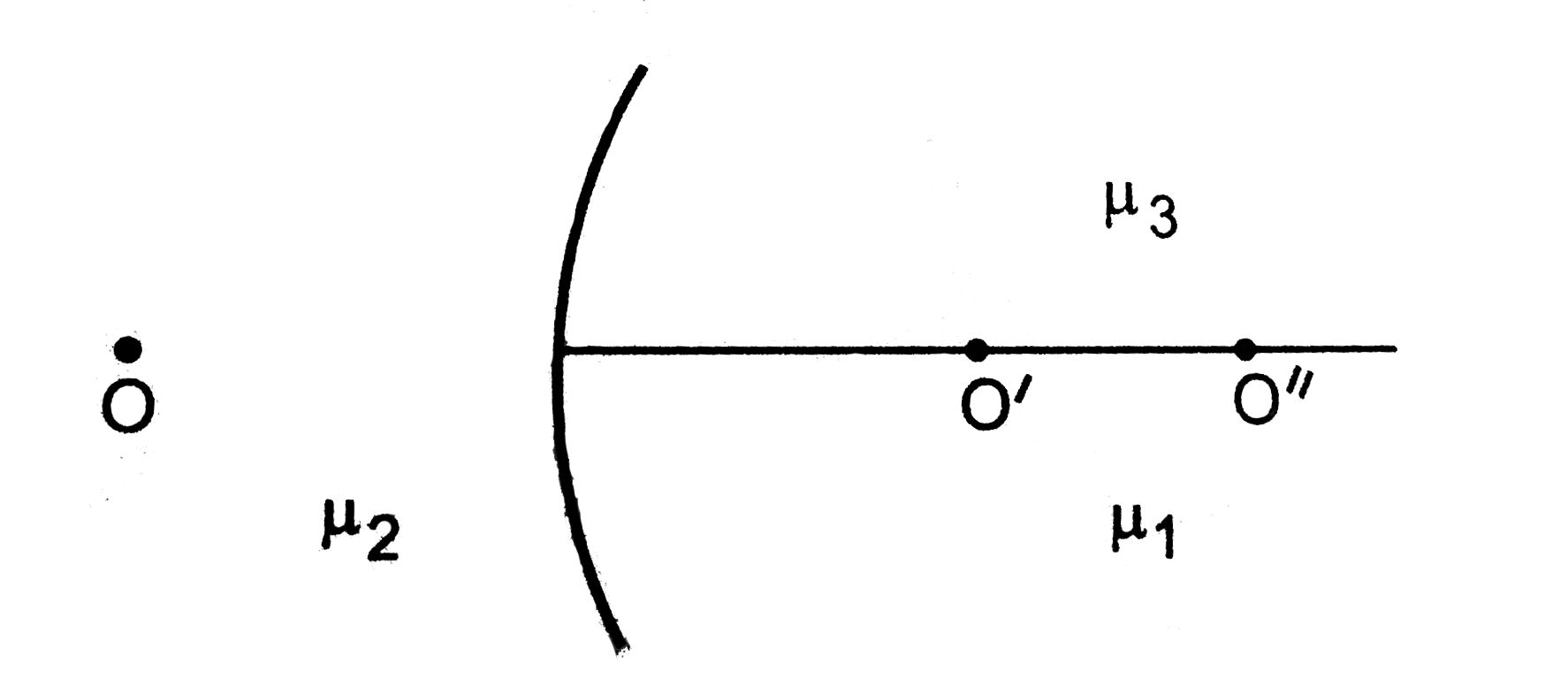Derive the relation:- μ2v−μ1u=μ2−μ1R when light undergoes refraction fromoptically rarer to optically denser medium at curved surface.Solution in Punjabi
Step by step video & image solution for Derive the relation:- frac(mu_2)(v) - frac(mu_1)(u) = frac(mu_2 - mu_1) (R) when light undergoes refraction fromoptically rarer to optically denser medium at curved surface. by Physics experts to help you in doubts & scoring excellent marks in Class 12 exams.
Updated on:21/07/2023Topper's Solved these Questions
Similar Questions
An object is placed in front of concave mirror of radius of curvature 40 cm at a distance of 10cm. Find the position, nature and magnification.
View SolutionA transistor, connected in common-emitter configuration, has input resistance R∈=3kΩ and load resistance of 6kΩ.If β=40 and an input signal of 20m V is applied, calculate the voltage gain, output voltage and power gain.
View SolutionThe equation of refraction at a spherical surface is μ2v−μ1u=μ2−μ1R
Taking R=∞, show that this equation leads to the equation
RealdepthApparentdepth=μ2μ1 for fraction at a plane surface.
View SolutionFigure shows figure three transparent medi of refractive indices μ1,μ2andμ3. A point object O is placed in the medium μ2. If the entire medium on the right of the spherical surface has refractive index μ1, the image forms at O. If this entire medium has refractive index μ2 the image form at O''. In the situation shown

View SolutionWhat happens to the frequency, wavelength and speed of light that crosses from a medium with index of refraction mu_1 to one with index of refraction mu_2 ?
View SolutionProve that −μ1u+μ2v=μ2−μ1R when refraction occurs from rarer to denser medium at a concave spherical refracting surface.
View SolutionWhen refraction occurs from denser to……….., then (mu_2)/(mu_1) = …………. .
View SolutionProve the following formula when refraction takes place at a convex spherical refracting surface and source of light lies in the rarer medium and image formed is real μ2v−μ1u=μ2−μ1R Where the terms have their usual meanings.
View SolutionStarting new cartesian sign conventions, derive the relation. -frac(mu_1)(u) + frac(mu_2)(v) = frac(mu_2-mu_1)(R) , when refraction occurs from rarer to denser medium at convex spherical refracting surface (mu_1 lt mu_2) . Where u, v and R are object distance, image distance and radius of curvature of spherical surface respectively.
View SolutionA convex lens made of a material of refractive index μ1 , is kept in a medium of refractive index μ2, Parallel rays of light are incident on the lens. Complete the pathof rays of light emerging from the convex lens if μ1=μ2.
View SolutionA convex lens made of a material of refractive index 'mu_1' is kept in a medium of refractive index μ2, Parallel rays of light are incident on the lens. Complete the pathof rays of light emerging fromthe convex lens if μ1<μ2.
View SolutionA convex lens made of a material of refractive index μ1 is kept ih a medium of refractive index μ2, Parallel rays of light are incident on the lens. Complete the path of rays of light emerging fromthe convex lens if μ1>μ2.
View SolutionDerive the relation:- frac(mu_2)(v) - frac(mu_1)(u) = frac(mu_2 - mu_1) (R) when light undergoes refraction fromoptically rarer to optically denser medium at curved surface.
View SolutionWhat happens to the frequency, wavelength and speed of light that crosses from a medium with index of refraction mu_1 to one with index of refraction mu_2 ?
View SolutionAn object at the bottom of a tank containing two different liquids (which do not mix with each other) is seen vertically from above . Prove the apparent depth pf the object is frac(d_1)(mu_1)+frac(d_2)(mu_2) if the lower and upper liquids are respectively of depths d_1 and d_2 and R.I. mu_1 and mu_2 .
View SolutionA ray of light travelling in a medium of refractive index mu_1 is incident obliquely at the boundary of a medium of refractive index mu_2 . The ray may reflect back totally only when u_1 is _____ mu_2 .
View Solution
